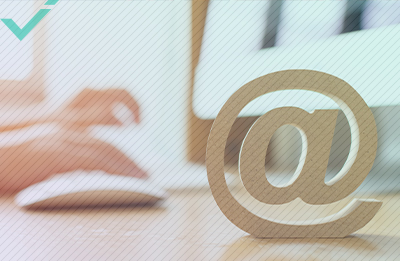Want your audience to stay longer? Our advice: turn your content into a game. Gamification is a proven strategy that combines psychological triggers with interactive content to keep users involved and invested. Whether you’re a digital marketer, small business owner, or content strategist, gamification can help you grab people’s attention and turn passive readers into active participants.
What is Gamification?
Now, what is gamification in marketing? As the name implies, gamification means applying game mechanics, such as points, badges, levels, and challenges, to non-game content. It taps into basic human psychology: the desire for achievement, reward, and social recognition. Turning content consumption into a series of engaging mini-goals gives your audience a reason to come back, reducing bounce rates and driving key engagement metrics.
However, gamification isn’t just a novel approach to driving engagement; it’s rooted in behavioural science. Gamification works because it activates dopamine pathways via reward-based mechanics, increases focus through clear goals, and fosters community with competition or collaboration. These psychological responses are why leaderboards, daily streaks, and challenges are so effective.
![]() Gamification uses reward-based mechanics to encourage interaction and deepen user engagement with your content.
Gamification uses reward-based mechanics to encourage interaction and deepen user engagement with your content.
Why Use Gamification in Marketing?
Before we look at some examples and practical tips, we’ll discuss the benefits of gamification in marketing. Gamification doesn’t just make content more fun; it supports concrete marketing goals and builds meaningful interactions between your brand and audience.

- Higher engagement: People spend more time engaging with gamified content because it gives them a reason to keep clicking, scrolling, and coming back. Adding quizzes, progress bars, or challenges introduces a sense of curiosity and purpose. This reduces bounce rates and increases time-on-page, especially when users can see their progress or earn a reward at the end.
- Increased brand loyalty: Systems like badges, levels, or daily streaks trigger repeat visits. When you reward users for consistency, they return for both the content and the experience. Over time, this kind of interaction fosters a stronger emotional connection to the brand.
- Greater conversion rates: Gamified calls to action (CTAs), such as “complete this quiz to unlock your discount”, feel like a reward instead of a sales push. They add value and drive users toward micro-conversions.
- More data and feedback: Interactive formats such as quizzes, polls, and user-generated content generate rich behavioural data. You’ll discover what motivates your audience, where they drop off, and what elements drive clicks or purchases. This insight is far more valuable than raw traffic numbers alone.
Done well, gamification creates a near-endless loop: users engage, get rewarded, and come back. It’s a cycle that can be framed to benefit both the brand and the user.
![]() Gamification boosts attention, conversions, loyalty, and learning by making your content more interactive.
Gamification boosts attention, conversions, loyalty, and learning by making your content more interactive.
Examples of Gamification in Content Marketing
Let’s look at some examples of gamification in marketing, as it comes in many forms. From mobile apps to loyalty programmes, brands across multiple industries use game mechanics to increase engagement and drive customer action.
Duolingo: Language Learning Through Streaks and Rewards
Duolingo turns learning into a game. Users earn XP (experience points), build daily streaks, and progress through levels much like they would in a video game. Progress bars and achievement badges offer regular dopamine hits, keeping motivation high even during tough lessons. The app also lets users set daily goals and notifies them to maintain their streaks, turning occasional learners into daily users with minimal friction.
Nike Run Club: Challenges and Social Badges
Nike Run Club gamifies running by offering users virtual badges for hitting personal milestones and joining time-limited global challenges. These challenges aren’t just about individual achievement; they’re social. Users can compare stats, climb leaderboards, and earn bragging rights among their peers. This creates a community around the brand and encourages long-term app usage while promoting Nike products that are contextually relevant.
Starbucks Rewards: Tiers, Games, and Personalised Goals
Starbucks takes its loyalty programme to the next level by adding game-like elements. Customers collect stars with every purchase, levelling up through tiers to unlock exclusive perks. The app often features interactive games to keep users engaged, like limited-time challenges or “double star” days. Personalised goals such as “buy three cold drinks this week to earn bonus stars” make the experience feel custom and create urgency without being pushy.
These brands succeed because the game mechanics feel rewarding and relevant. They tap into basic human drives, such as progress, achievement, and community, and align them with their product or service.
![]() Quizzes, badges, challenges, and point systems turn simple actions into ongoing customer engagement.
Quizzes, badges, challenges, and point systems turn simple actions into ongoing customer engagement.
How to Plan Your Gamification Strategy
Gamification works best when it’s linked to both user goals and business outcomes. It’s not just about adding badges or points, it’s about creating a structured experience that motivates users to take meaningful actions. In this section, we’ll look at some gamification strategies for content marketing.

Understand Your Audience
Start with audience research. What motivates your users? Is it competition, creativity, curiosity, or a sense of community? Gamification will only work if it taps into something your audience already values. Look at user behaviour data (e.g., bounce rates, click paths), conduct surveys, or study how users engage with your content. For example, a gamified knowledge challenge might work if your audience enjoys quizzes. If they engage mainly via community forums, a leaderboard for top contributors could further drive brand loyalty.
Set Clear Goals
Without a clear goal, gamification can become useless noise. Define what success looks like for your campaign: Are you aiming to boost time-on-page, increase email signups, grow app usage, or collect user-generated content? Assign measurable KPIs to each target, such as a 15% increase in newsletter subscriptions or a 10% drop in bounce rate, and align these with your broader marketing strategy.
Choose the Right Game Mechanics
The mechanics you choose should match both your audience and your goals. Points, badges, and progress bars are easy to understand and great for beginners. More advanced mechanics like time-based challenges or tiered reward systems work well for highly engaged users. For example, if you’re running a fitness app, daily streaks and milestone achievements can keep users coming back. If you manage a blog, quizzes at the end of key articles can drive repeat visits and reinforce learning.
Above all, avoid overcomplicating the structure. The rules should be intuitive, and the rewards clear. Users who can’t understand how to play or win will quickly abandon the game.
Map the User Journey
Think of gamification as a layer within your existing customer journey. Outline where and how users will encounter your game elements. Is it at the end of a blog post, during a product onboarding flow, or after completing a purchase? Each touchpoint should make sense within the overall experience. For example, adding a quiz at the end of an educational blog post can encourage users to reflect and engage more deeply, while placing a badge system inside a learning app reinforces continued use.
Consider using flowcharts to visualise the journey and spot areas of friction or drop-off. Honest analysis is crucial to optimising your strategy.
Plan for Measurement and Iteration
Use tools such as Google Analytics, Hotjar, or in-app metrics to track users’ engagement with gamified features. Are they completing challenges? Or are they dropping off halfway through a quiz? Quantitative data will tell you what’s happening, but qualitative feedback (like surveys or reviews) will tell you why.
Also, be prepared to adjust difficulty levels, refine reward structures, or swap out underperforming mechanics. A/B testing minor changes, such as icon placement or wording, can lead to significant improvements in engagement. Don’t stop testing just because your gamification mechanics are live.
![]() Start with user needs and goals, pick the right game tools, and iterate based on real user behaviour. Keep objectives simple, purposeful, and responsive, and adjust when necessary.
Start with user needs and goals, pick the right game tools, and iterate based on real user behaviour. Keep objectives simple, purposeful, and responsive, and adjust when necessary.
Tools and Platforms for Gamification
Don’t worry, you don’t need to build gamified content from scratch. There are platforms and plugins to help you add gamification with little coding required—perfect for small teams or solo marketers. Whether you’re running a blog, e-commerce store, or digital learning course, there’s a tool that fits your setup and goals.

Here are some popular examples:
- Xperiencify: Ideal for course creators and membership content.
Pros: Easy drag-and-drop builder, progress tracking, and built-in reward systems.
Cons: Paid-only platform, so not suitable for one-off campaigns. - Gamiphy: Best for e-commerce and loyalty systems.
Pros: Integrates with Shopify and CRMs, offers points and tier-based systems.
Cons: Can be complex for smaller sites or those without a developer on hand. - Woobox: Great for social media contests, giveaways, and quizzes.
Pros: Seamless integration with Facebook and Instagram is helpful for lead generation.
Cons: Limited design flexibility for custom branding.
Explore each tool’s trial option before committing to a paid plan. The best gamification platforms balance ease of use with deep functionality. You’ll know when you’ve found the most suitable option for your business.
![]() Use tools like Xperiencify or Gamiphy to add gamification elements without coding everything from scratch.
Use tools like Xperiencify or Gamiphy to add gamification elements without coding everything from scratch.
Gamification Best Practices and Common Mistakes
The dos and don’ts listed below will improve your gamification and avoid common user experience pitfalls.
Do
- Make rewards meaningful: Free content, discounts, or public recognition can motivate more than generic prizes. Tailor rewards to your audience’s interests.
- Keep the experience simple: Clear rules, easy access, and mobile optimisation help users jump in quickly. This is especially important for campaigns aimed at casual audiences.
- Align with your brand: The tone, visuals, and experience should feel familiar across platforms. A gamified experience that looks off-brand can confuse users, reducing trust.
Don’t
- Overcomplicate the mechanics: If users need instructions to play, the game is probably too complex for long-term retention. Simplicity encourages participation and completion.
- Ignore feedback: Pay attention to how users interact. If people drop out of gamification midway, that’s a sign that mechanics need adjusting, so be ready to adapt.
- Gamify without purpose: Don’t add a leaderboard or badge system just because you can. Every gamified element should support a strategic goal, whether it’s boosting loyalty, increasing engagement, or collecting feedback.
![]() Gamified content should be clear, fun, and useful. When developing it, always consider the user experience and goals.
Gamified content should be clear, fun, and useful. When developing it, always consider the user experience and goals.
Get (And Keep) Users Hooked with Gamification
Gamification is a solid design strategy that makes content more engaging and rewarding. Whether you’re adding a quiz to a blog post, launching a customer challenge, or designing a loyalty system, the same rules apply: understand your audience, set clear goals, and ensure a cohesive experience.
Now it’s your turn. Start simple, test, and learn what works. You don’t need a full game engine, just a good idea, the right tools, and a user-first mindset. Good luck!


